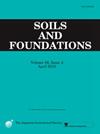The construction process of a cast-in-situ bored pile is too complicated to be described by the cavity expansion theory with a single process. An exact unified semi-analytical solution for both cylindrical and spherical cavities reverse expansion after unloading in drained soil is developed. The non-associated Mohr-Coulomb model and definition of logarithmic strain are adopted in the reverse plastic zone. This model can be used to solve the stress and displacement fields of the soil around a bored pile along both the horizontal and depth directions. Parametric analysis shows that the effect of the unloading phase does not change the ultimate pressure of cavity reverse expansion compared with in situ expansion. The cavity cannot re-expand to its initial radius even though the cavity pressure reloads to the initial value. The increase of internal friction angle, cohesion, and Young's modulus has a positive effect on radius recovery, while the dilatancy angle has a negative effect. A simulation of the construction process of cast-in-situ bored piles is presented, where the role of boring, mud wall protection, and concrete placement is defined. An example that describes the stress and displacement fields around a pile shows that the total radial displacement of soil around the pile is dominated by contraction displacement. And it is closely related to depth and horizontal distance. The results of both parameter analysis and example analysis demonstrate that a low reverse cavity pressure corresponds to a stress-reduction area surrounding the cavity.


